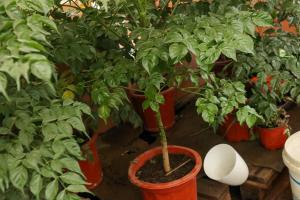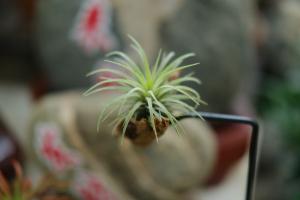Introduction
Tomato plants are a popular choice for home gardeners due to their versatility, low maintenance, and wide range of uses in cooking. However, they are also susceptible to a variety of diseases and pests that can cause black spots to appear on the plant leaves and fruits. In this article, we will discuss some effective methods for treating black spots on tomato plants.
Identifying the Cause of Black Spots
Before treating black spots on tomato plants, it is important to identify the underlying cause of the problem. Black spots can be caused by a variety of issues, including nutrient deficiencies, fungal diseases, and bacterial infections. One common cause of black spots is a type of fungus called Alternaria solani, which causes early blight on tomato plants. Symptoms of early blight include dark spots on the leaves that eventually turn yellow and fall off, as well as small black spots on the fruits.
Prevention Methods
Prevention is the best way to avoid black spot problems on tomato plants. Planting disease-resistant varieties and ensuring adequate soil drainage and sunlight are important steps in preventing black spots. Regularly removing any infected leaves or fruits can also help limit the spread of disease. In addition, avoiding overcrowding of plants can help reduce the risk of fungal diseases that cause black spots on the plant leaves and fruits.
Chemical Treatments
Chemical treatments can be effective in treating black spots on tomato plants. One option is to use a fungicide that is specifically formulated to target the type of fungus causing the black spots. Copper-based fungicides are a common choice for treating tomato plant diseases, as they are effective against a wide range of fungal infections. However, it is important to follow the instructions for use closely, as overuse of fungicides can lead to plant damage and even death.
Natural Remedies
If you prefer to use natural remedies and avoid the use of chemicals, there are several options available for treating black spots on tomato plants. One effective method is to spray a mixture of baking soda and water on the plant leaves. Baking soda is a natural fungicide that can help prevent the growth and spread of fungal infections. Another option is to apply a solution of neem oil and water to the leaves and fruits. Neem oil is a natural insecticide that can help control pests that may be contributing to the development of black spots on the plant.
Pruning and Trimming
Pruning and trimming can also be effective in treating black spots on tomato plants. Removing any infected leaves or fruits as soon as they are noticed can help prevent the spread of disease. In addition, trimming back any overgrown branches or foliage can improve air circulation around the plant, reducing the risk of fungal infections that cause black spots on the leaves and fruits.
Conclusion
Black spots on tomato plants can be a frustrating problem for home gardeners. However, by identifying the underlying cause of the problem and using effective treatment methods, it is possible to manage and even eliminate the issue. Whether you choose chemical treatments or natural remedies, the key is to act quickly and stay vigilant in maintaining a healthy and disease-free garden.

 how many times do yo...
how many times do yo... how many planted tre...
how many planted tre... how many pine trees ...
how many pine trees ... how many pecan trees...
how many pecan trees... how many plants comp...
how many plants comp... how many plants can ...
how many plants can ... how many plants and ...
how many plants and ... how many pepper plan...
how many pepper plan...
































